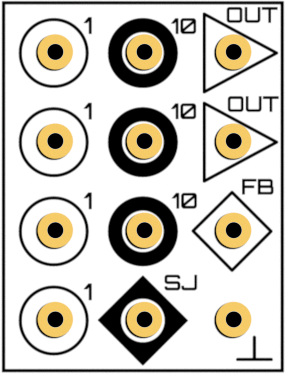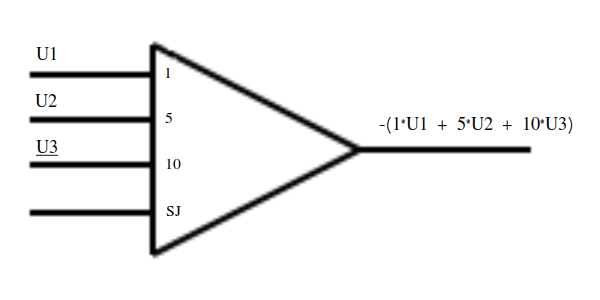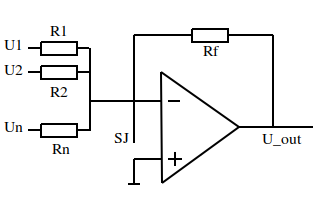3. Summer¶

|

|

|
THAT summer unit |
Summer circuit symbol |
Summer electrical circuit |
The summer is the simplest active computing part. As the name suggests, it gives out the sum of given inputs.
It fullfills the equation
where
Note the sign change at the summer output!
On the basis of the output inversion a summer with one input functions as inverter and therefore the summer and the inverter share the same circuit symbol.
The output inversion is the result of the function principle: The output of the operation amplifier is always trying to compensate all currents at it’s negative input caused by the input voltages.
The ratio between the input resistors Ri and the feedback resistor Rf determines the summing factor. If the overall input resistance equals the feedback resistor, the sum factor is one. When changing Ri to a tenth of Rf so Ri = Rf/10 is fullfilled, an input factor of 10 is achieved.
The SJ connection gives the opportunity to extent the number of inputs by simply connecting this point with a resitor array XIR.
By connecting the FB panel with the ground panel directly below, the summer is converted into an open amplifier, e.g. in order to create inverse functions.
3.1. Inverter¶

|
THAT inverter unit |
The inverter circuit equals the summer circuit execpt for the number of inputs. The inverters found on the THAT have a single in- and output, but hold the possibility to extent the number of inputs by connection the SJ-panel of the inverter to a SJ-panel of a XIR-element.
By simple adding this input network the inverter is converted into a summer, in case you need more summers then already present.